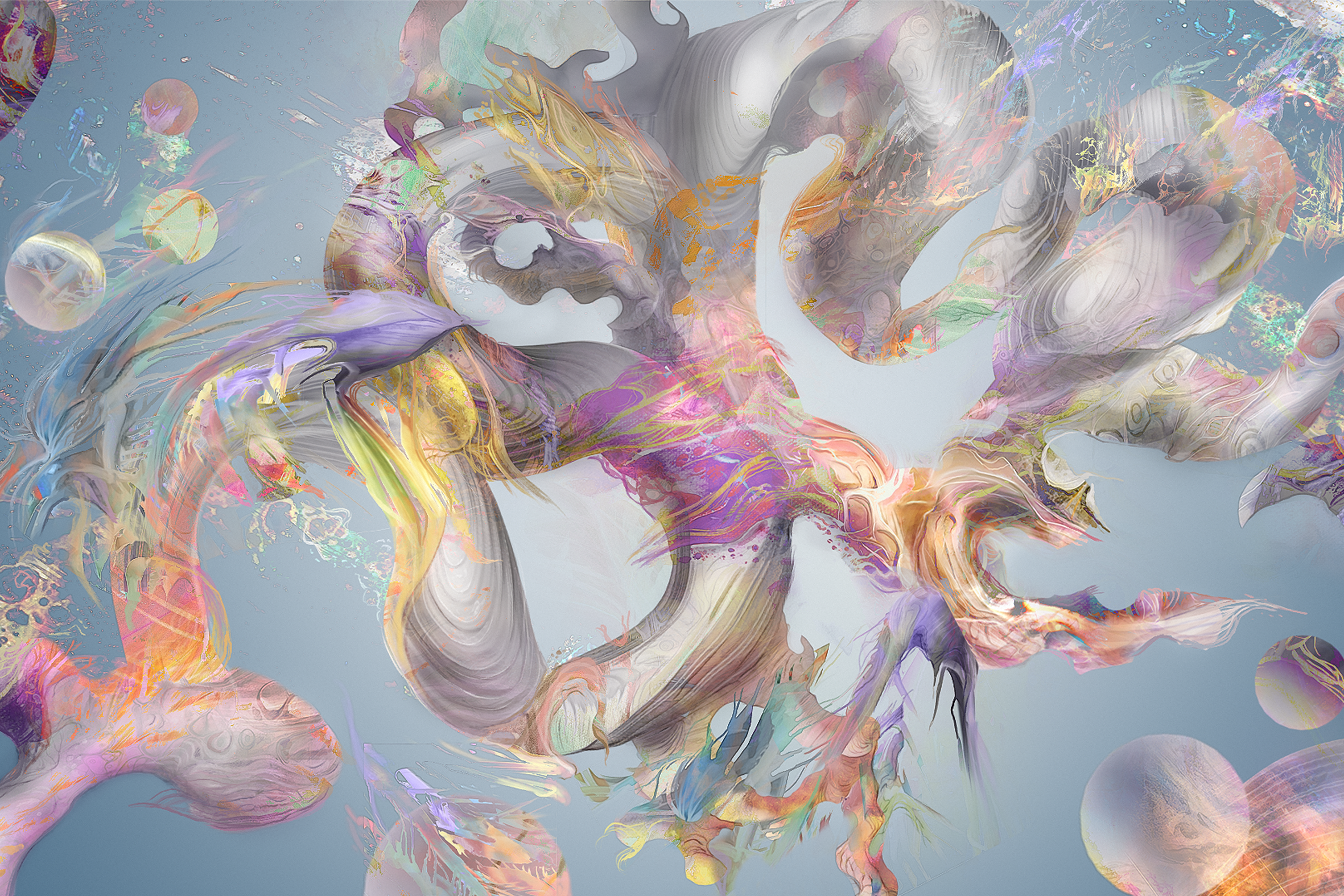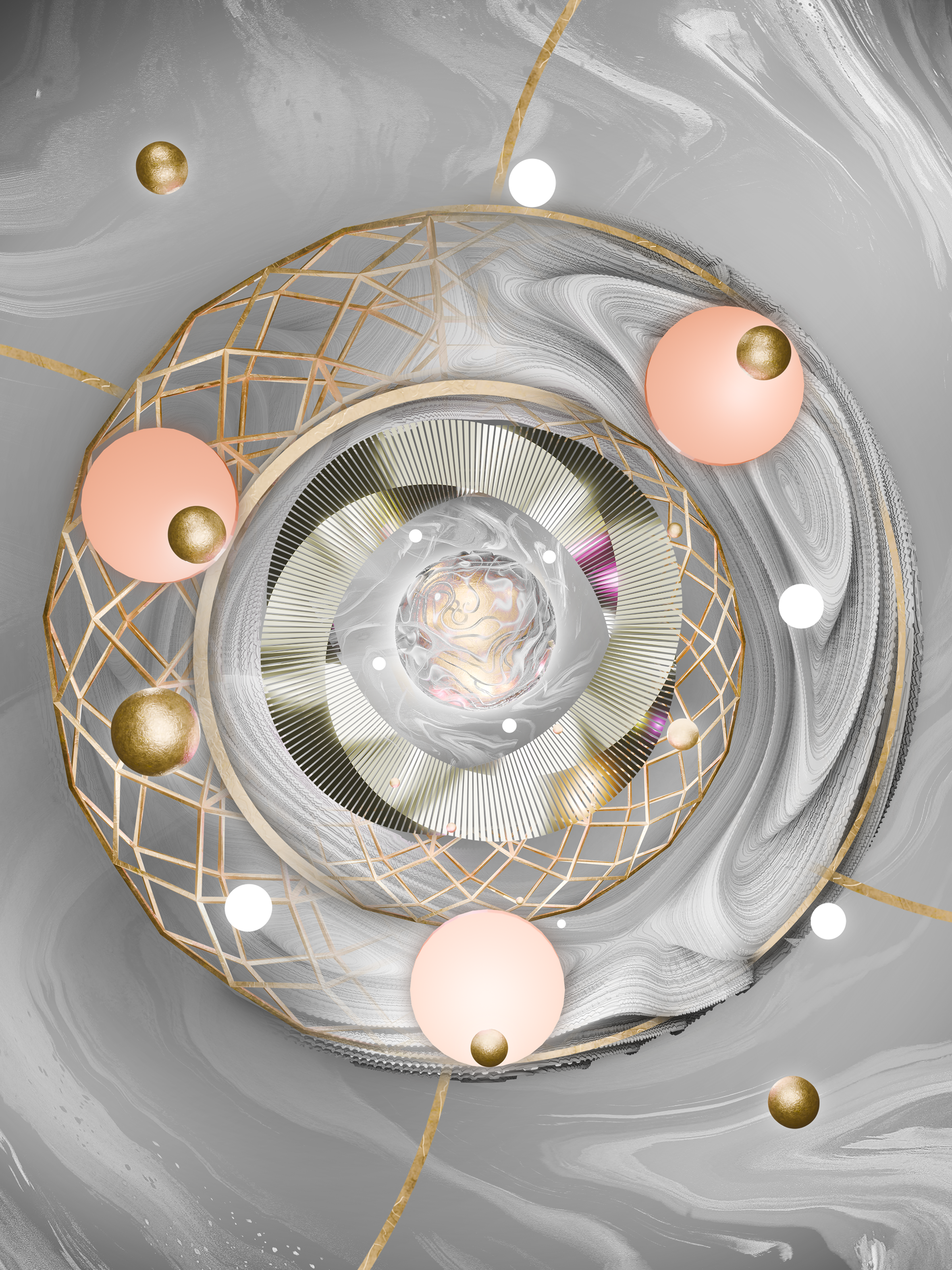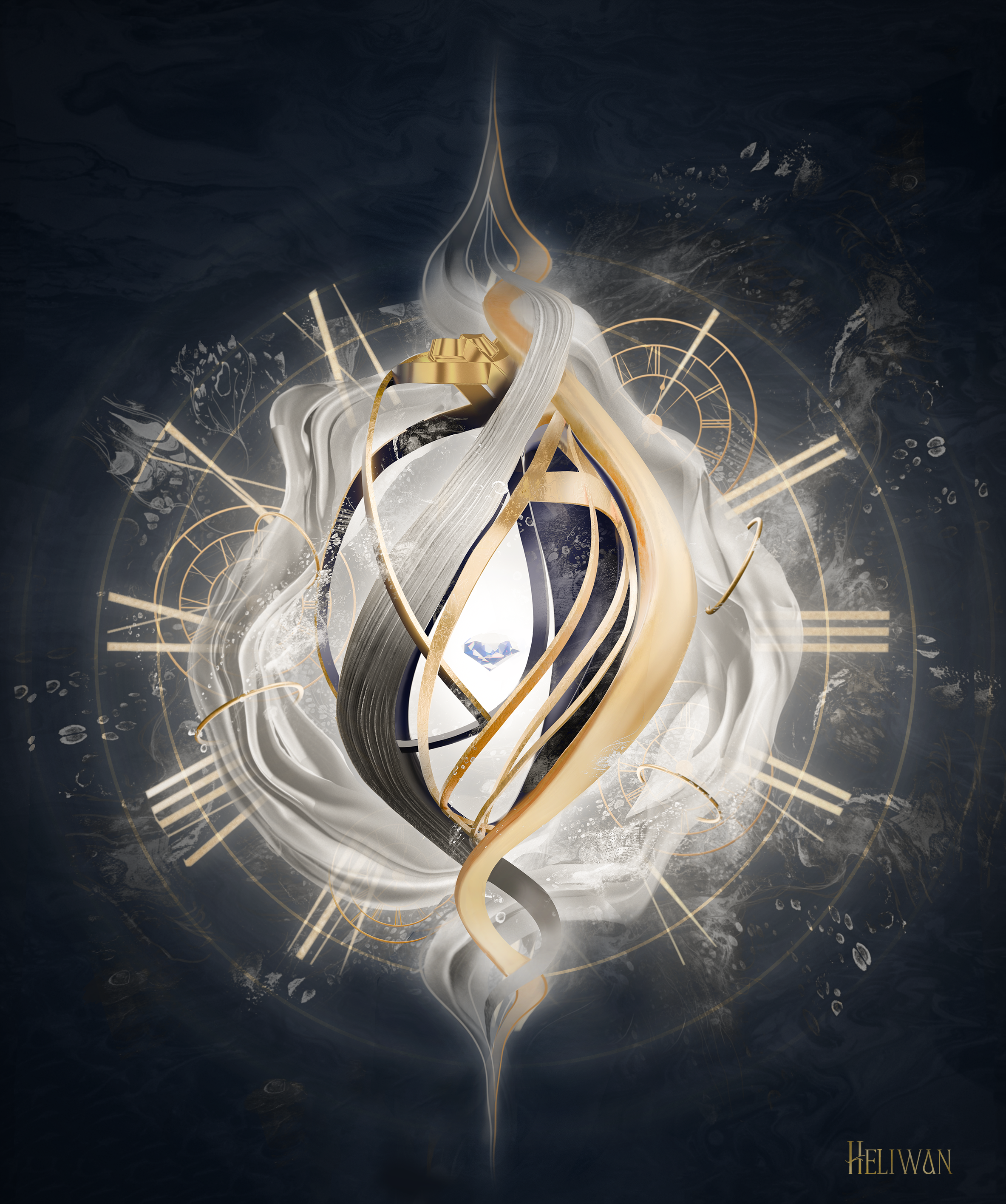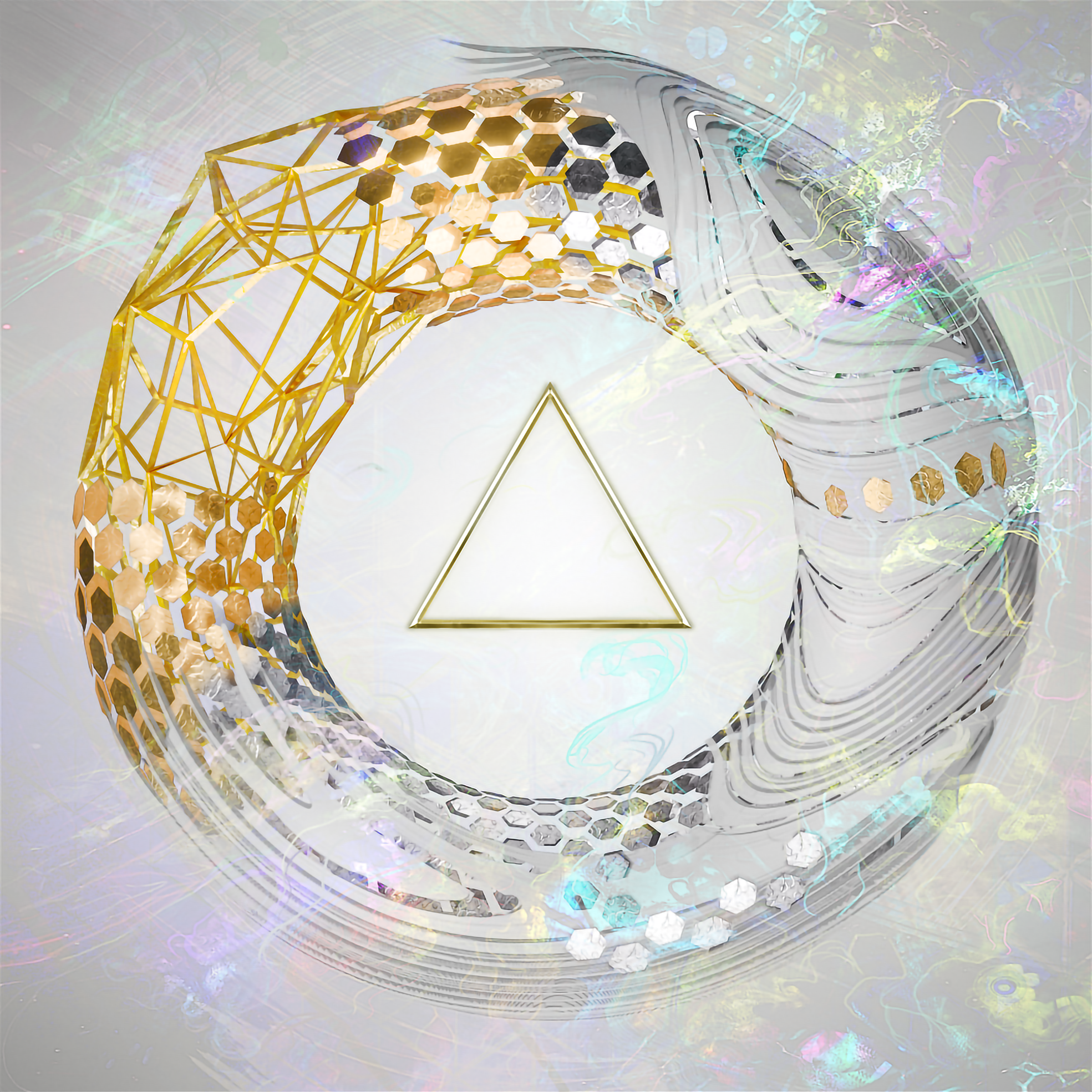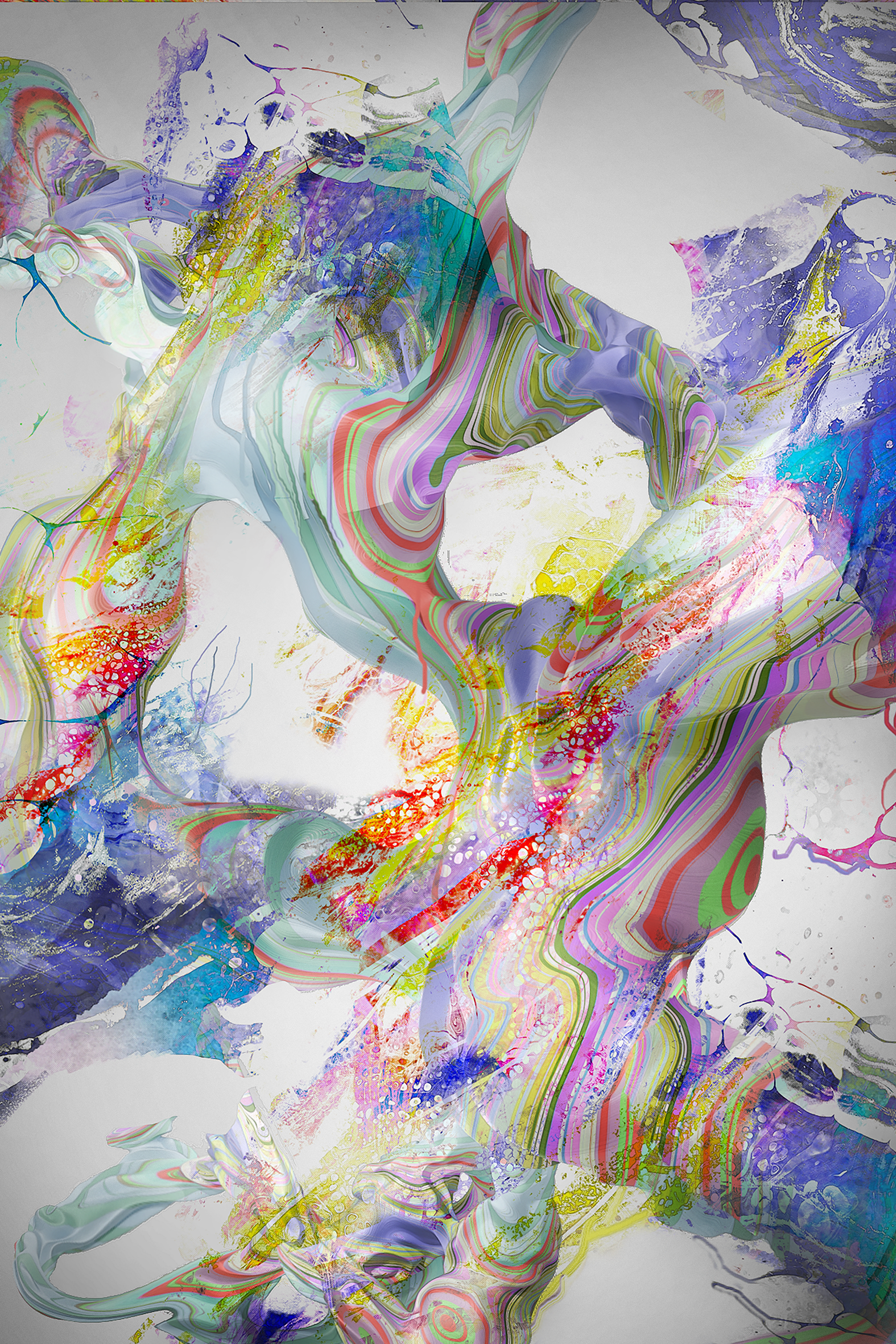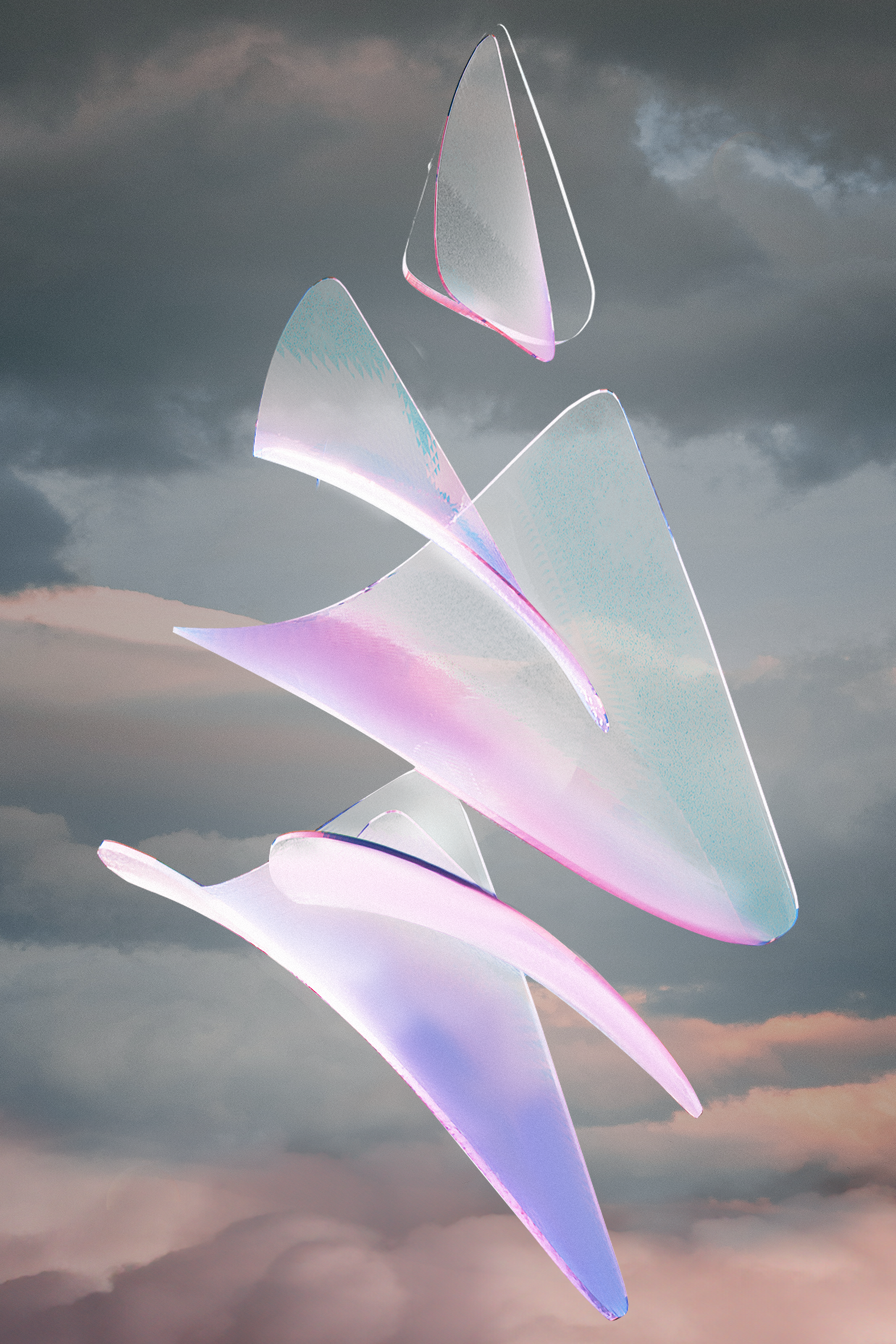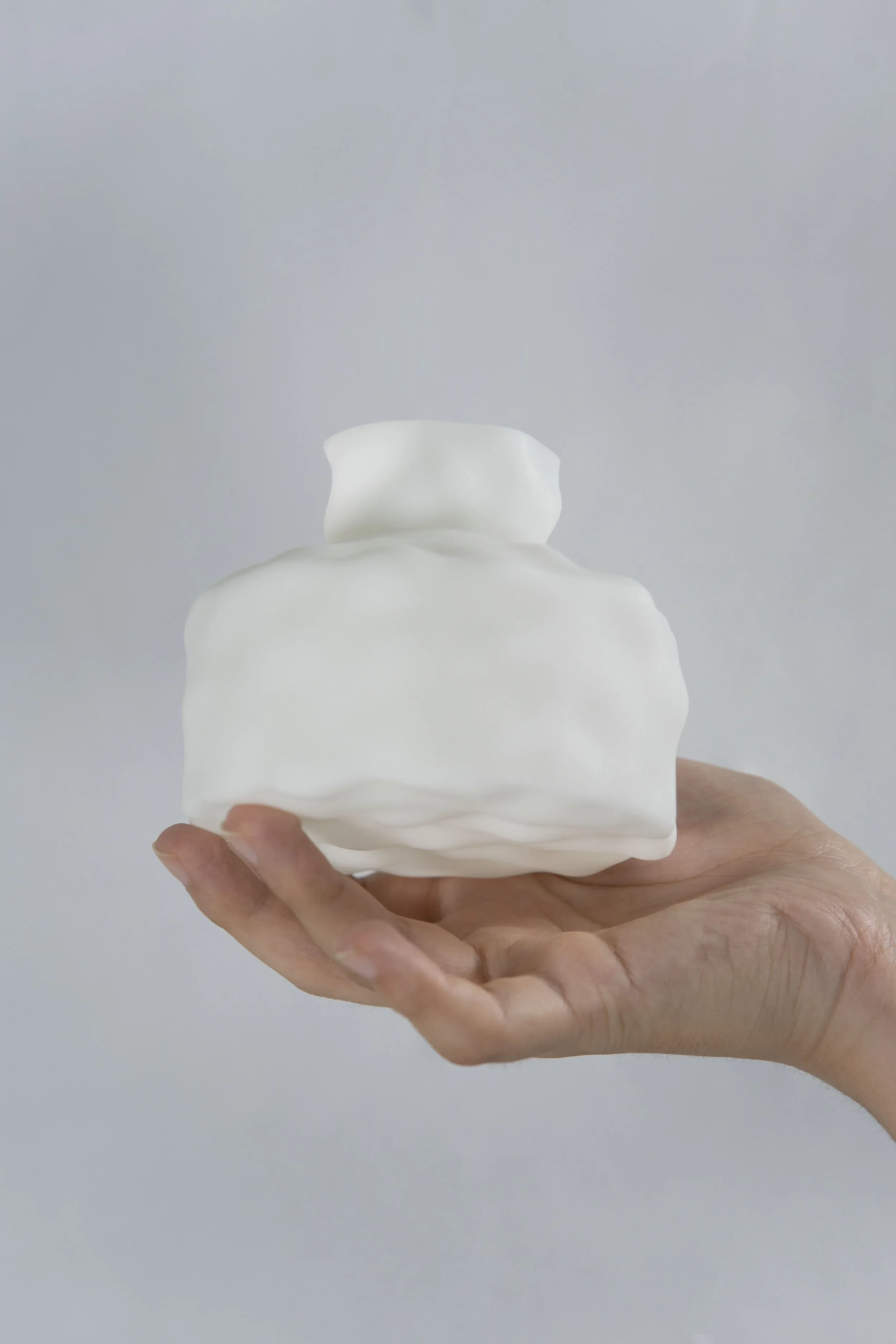10 Questions with Heliwan
Heliwan is a multidisciplinary artist and art director whose practice moves fluidly between 3D art, painting, and photography. With a background in visual storytelling and over nine years of experience in creative direction, his work explores the boundaries between the digital and the tactile, the constructed and the organic. Trained at private academies in graphic design and 3D art, Heliwan integrates technical precision with a poetic visual sensibility. Whether developing immersive virtual environments, abstract compositions, or conceptual photo series, he approaches each medium as part of a unified visual language. Heliwan works across both commercial and independent projects, continually experimenting with hybrid forms of expression.
Heliwan - Portrait
ARTIST STATEMENT
Heliwan's artistic research is grounded in the tension and harmony between technology and emotion. Working across 3D design, traditional and digital painting, and experimental photography, he creates layered visual worlds that reflect on identity, perception, and transformation. His images often balance abstract textures with structural precision, evoking a sense of both stillness and motion. Gabriele sees each medium not as a separate discipline, but as an interconnected tool to explore space, form, and atmosphere. Through this multidisciplinary approach, he aims to blur the line between digital simulation and emotional resonance, inviting viewers to engage with the unseen narratives behind his constructed realities.
Perpetual genesis, 3d render and Digital painting, 60x40 cm, 2024 © Heliwan
INTERVIEW
First of all, can you tell us about your background and how you first got into visual storytelling and 3D art?
I think my journey into visual storytelling began the moment I picked up a camera for the first time. Photography gave me a way to slow down and listen to the world to observe light, texture, and silence. At first, I was drawn to capturing reality as it was, but over time I felt the need to go deeper, to express not what I saw but what I felt. That's how I moved into abstract photography. I started exploring forms, patterns, and contrasts, searching for the invisible connections between things, as if I could uncover hidden emotions in a crack of light or a blurred reflection.
Black and white photography became a natural step in this path, stripping away the distraction of colour to focus on essence and structure. But at some point, the flatness of the image wasn't enough anymore. I wanted my pieces to breathe, to have volume and tension. That's when I began combining photography with 3D renders, at first subtle, like adding a layer of texture or creating impossible structures behind familiar forms. It felt like I had unlocked a new language where photography and digital sculpture could speak to each other.
Over time, colour found its way back into my work, but not as a representation of the visible world. I began painting over my images, layering colour as emotion, as energy. Now, my work is a fusion of painted abstraction, 3D abstract forms, and photography.
My desire is to speak directly to the emotional part of the human soul. I never want my 3D renders to feel like cold, mathematical, computer-generated images. I want them to feel alive, warm, human. I can only reach this by mixing 3D precision with photography and manual (digital) painting. For me, it's a dialogue between the order of the 3D structure and the chaos of the paint between control and spontaneity, logic and feeling. At that meeting point, I try to create pieces that don't just ask to be seen, but invite you to do an introspective journey to grasp the essence of the message that I send with my art. My desire is not to give answers but to create questions, make them think and create a trigger that can createemotions and comparisons in the viewers.
The beginning of a new era, 3d render, 60×40 cm, 2024 © Heliwan
You've trained in both graphic design and 3D art. How have these disciplines shaped the way you work today?
Graphic design taught me the importance of balance, how to build an image that speaks clearly and directly to the human mind. It showed me how shapes, space, and composition can guide the eye, create harmony, and deliver a message without words. That foundation is always with me, even when I create abstract work.
3D art, on the other hand, opened the door to something more instinctive and free. It gave me the possibility to build worlds, forms, and structures that don't exist, and maybe couldn't exist, in reality. It's a way to escape, to give shape to inner visions through imagination, colour, line, material, and light.
Today, these two disciplines come together in my work. Graphic design brings clarity and intention; 3D art brings emotion, depth, and wonder. When I mix them with photography and painting, that's where I feel I can truly create something that connects on both a mental and emotional level, something ordered yet dreamlike, familiar yet impossible.
Your practice moves between painting, photography, and digital media. How do you choose which medium to work with for a project?
Choosing a medium is like listening to a quiet voice inside, it depends on the story I feel needs to be told, the emotion I want to awaken in the viewer. Each technique carries its own language: photography captures fleeting moments, whispers of light and shadow that hold a silent truth; painting pours out raw emotion, a dance of color and chaos that speaks directly to the soul; and 3D Art, with its endless possibilities, lets me shape dreams into tangible forms, crafting worlds that exist between reality and imagination.
In that delicate space between thought and feeling, I reach for the medium that resonates most deeply with my ownsensibility, the one that can carry the weight of my message and unlock the door to a shared emotion. It's never just about the tool, but about the heartbeat it can evoke in those who encounter the work.
Anime inter lucem et spem, 3d Render and digital painting, 70x60 cm, 2025 © Heliwan
Ethereal convergence, 3d render, 80×60 cm © Heliwan
How do you approach the balance between technical precision and emotional depth in your work?
For me, the balance between technical precision and emotional depth isn't something planned or calculated; it's an inner instinct, a feeling that guides me beyond reason. It's not a rational choice but a deep necessity to express what lives inside me, a language born from pure emotion.
Technical precision, the order, the structure, gives shape to this feeling, like a skeleton that supports a living body. But without emotion, that precision would be cold and lifeless. The emotional depth is the soul, the heartbeat that breathes warmth and humanity into the form.
I let this instinct lead me, trusting the dialogue between control and surrender, logic and chaos, to create work that feels both precise and deeply alive.
Technology and emotion are central to your practice. What draws you to explore this relationship?
For me, technology is not just a tool or a set of techniques, it is an extension of the creative hand, another brush in my palette. It allows me to shape, manipulate, and give form to the intangible currents of thought and feeling that move within me. Through digital means, I can explore dimensions beyond the physical, weaving together light, colour, and texture in ways that evoke subtle emotional landscapes.
But here's the delicate truth: technology by itself cannot create emotion. It is, after all, a language without a soul until it is guided by intention and feeling. The real mastery lies in ensuring that the method never overcomes the meaning. If technique becomes the goal, the work risks becoming hollow, cold, and mechanical. Instead, the technique must always serve the message, it must be the vessel that carries the deeper human experience.
This balance fascinates me. Technology offers precision, infinite possibilities, and the power to construct entire worlds, but it is the warmth of human vulnerability, the chaos of emotion, that breathes life into these creations. I am drawn to this interplay, this conversation between cold calculation and raw feeling, order and spontaneity. It is in this dynamic tension that I find the richest space to express what words cannot reach.
In a way, technology frees me to explore the unknown parts of myself and to invite others to feel alongside me. It's a modern alchemy where pixels and paint, virtual and visceral, merge to create something that is both new and deeplyhuman.
Many of your images seem to blur the line between real and imagined spaces. What role does perception play in your creative process?
As I mentioned before, reality is not a fixed or universal truth, it is fluid, constantly shifting depending on our point of view. What is reality if not a perspective, an idea shaped by how each of us sees, feels, and interprets the world around us? Perception is the ever-changing lens through which we experience existence, and it is this lens I am deeply fascinated by in my work.
In my creative process, perception becomes both a tool and a subject. I explore the delicate border where the real and the imagined intertwine, where boundaries dissolve and give way to ambiguity. I want to invite the viewer to step into that space to question what they accept as "real" and to open themselves to a more fluid experience, where imagination colours what the eyes see.
Blurring these lines is a way to reflect the complexity of human experience, where memory, emotion, and fantasy blend with the physical world. It is not about deceiving the eye but about revealing the emotional truths that lie beneath surface appearances. In this space, perception is transformed from a passive reception of facts into an active, intimate dance of feeling and understanding.
By engaging with perception in this way, I hope to create images that resonate beyond the visible that spark curiosity, provoke introspection, and awaken the imagination. It is a journey into the unknown, where the limits of reality stretch and new possibilities emerge, inviting both artist and viewer to see the world with fresh eyes.
Whispers of Time, 3d render and digital painting, 70×60 cm, 2025 © Heliwan
Duality, 3d render and digital painting, 50×50 cm © Heliwan
Can you describe your process when developing immersive or abstract digital environments? Where do you usually start?
My creative journey always begins in the realm of the intangible, a feeling, a fleeting thought, or a sudden spark of inspiration that stirs something deep inside me. It's an impulse born from within, a quiet whisper that invites me to translate it into visual form. This emotional seed is the foundation, the heartbeat that guides everything else.
I begin by laying down colour on the canvas, not with precision, but with intention and emotion. It's a raw and instinctive phase, where chaos and order intermingle freely. The colours are not chosen simply for aesthetics, but for the way they resonate with the feeling I want to convey. This stage is like a dance, a conversation between my inner world and the emerging image, where the unpredictability of emotion breathes life into the work.
From this initial burst of colour and emotion, I start to refine and shape the forms, gradually bringing clarity and structure to the composition. It's a delicate balance allowing the energy and spontaneity of the early phase to remain alive, while introducing enough definition to guide the viewer's eye and invite them into the space.
Once the core palette and composition feel right, I move into building the environment itself. I craft the background, the atmosphere, the ambient space that will hold the narrative and emotion of the piece. This environment is not just a setting, but a living, breathing space that interacts with the emotions I want to express. It's where mood and tone merge, setting the stage for the viewer's experience.
Then comes the 3D rendering, a moment of precision and depth. Here, technology allows me to shape light, texture, and form with incredible detail. But even as I embrace this precision, I remain mindful that the technical aspect is only a means to an end. The true goal is to preserve the warmth and humanity of the piece.
To complete the work, I add a final touch of painting, often manual or digital, a human gesture that softens the edges and reconnects the piece to its emotional core. This final layer is the bridge between the exactness of 3D and the organic unpredictability of human expression. It's where the digital and the handmade meet, where order embraces chaos, and where the viewer is invited to linger in a space that feels both real and imagined.
This process is, for me, a journey of translation from the unseen currents of emotion to a world that others can step into, feel, and explore. It's about creating more than just images, it's about opening portals into the soul.
Symphony of the infinite, 3d render and digital painting, 60×40 cm © Heliwan
How do your commercial and independent projects influence each other, if at all?
For me, it's fundamentally a matter of communication, a constant, evolving conversation between two seemingly different worlds that, in truth, feed and shape each other in profound ways.
Commercial projects demand clarity, precision, and effectiveness. They challenge me to distil ideas into their purest form, to speak directly to an audience with intention and impact. This discipline sharpens my craft, teaching me how to structure visual narratives so that they resonate quickly and clearly, addressing specific goals and messages.
In contrast, my independent work is where my creative spirit truly breathes. It is a realm of freedom where emotion, intuition, and experimentation take precedence. Here, I can wander through the unknown, explore uncharted territories of thought and feeling, and allow vulnerability and chaos to guide my hand. This space is vital, it nurtures my authenticity and fuels my passion, reminding me why I create in the first place.
These two realms are not isolated; they exist in a dynamic dialogue. The rigour and focus from commercial work ground my independent projects, providing tools and structure that help translate raw emotion into compelling forms. Conversely, the depth and freedom of my personal creations enrich my professional work, infusing it with soul and a human touch that might otherwise be lost.
Together, they create a delicate balance like two sides of the same coin, each necessary to complete the whole. This interplay allows me to communicate more powerfully, connecting not only through polished messages but through genuine emotional resonance. It's a symbiotic relationship, one that continually shapes how I see, create, and share stories.
What recurring themes or questions keep resurfacing in your work over time?
At the core of my creative journey lies a profound inquiry into the nature of existence itself. My art is an exploration of transformation, the ever-present force that moves through everything. Nothing remains still; everything is caught in the ceaseless flow of becoming. We are not fixed entities but evolving beings, shaped by time, experience, and change. This fluidity is both our fragility and our strength, a reminder that life itself is a constant unfolding, a metamorphosis without end in a balance between black and white, light and darkness.
Time is the invisible artist, painting layers of change over our lives and the world around us. It is a gentle but relentless presence, shaping moments, eroding old forms, and birthing the new. In this dance with time, my work seeks to hold a space, a pause where transformation can be witnessed, felt, and honoured.
Through textures, colours, and forms that shift between clarity and abstraction, I try to capture the tension between permanence and impermanence, between the known and the unknown. My images become echoes of this eternal flux, invitations to contemplate the beauty of change and the mystery of existence.
In the end, these themes are not just questions but living conversations between me, the viewer, and the wider universe. They invite us to embrace our own transformations, to find grace in uncertainty, and to see in every moment the possibility of becoming something new.
The weight of the infinity, 3d render and digital photography, 60×40 cm © Heliwan
Are there any upcoming projects, exhibitions, or new directions you're excited to explore in the near future?
Yes, there is a quiet unfolding on the horizon, a whispered journey tracing the shadows between what was once seenclearly and what now dances in transformation.
It's a path woven with fragments: echoes of light, memories of the past captured through the lens. Shadows rendered in monochrome and gold, and forms that emerge where digital dreams meet the brushstrokes of colour.
This next chapter remains an invitation to wander the space where reality blurs and imagination takes flight. Soon, it will reveal itself not as a conclusion, but as a new beginning in the ever-shifting story I continue to tell.
Artist’s Talk
Al-Tiba9 Interviews is a promotional platform for artists to articulate their vision and engage them with our diverse readership through a published art dialogue. The artists are interviewed by Mohamed Benhadj, the founder & curator of Al-Tiba9, to highlight their artistic careers and introduce them to the international contemporary art scene across our vast network of museums, galleries, art professionals, art dealers, collectors, and art lovers across the globe.

